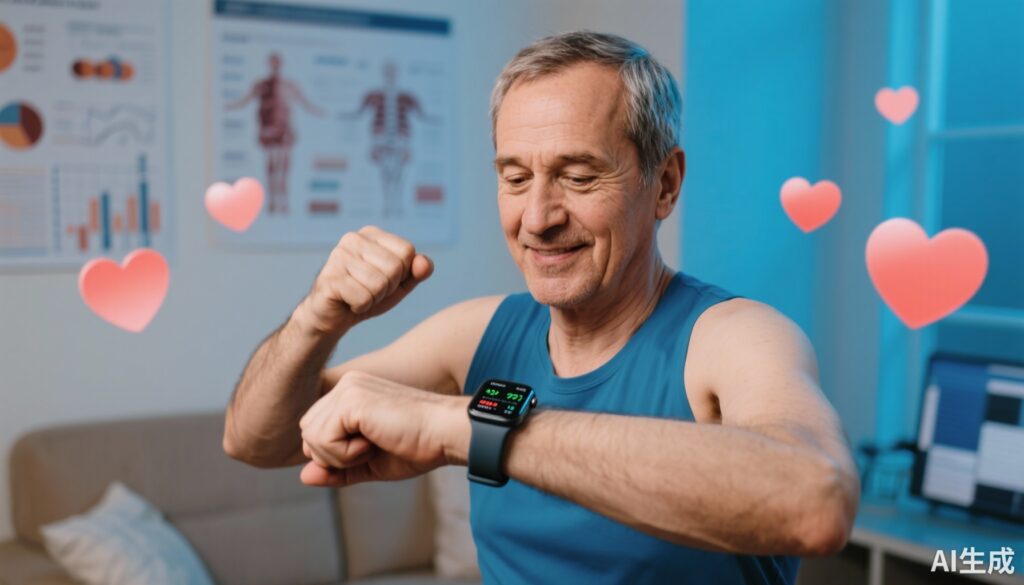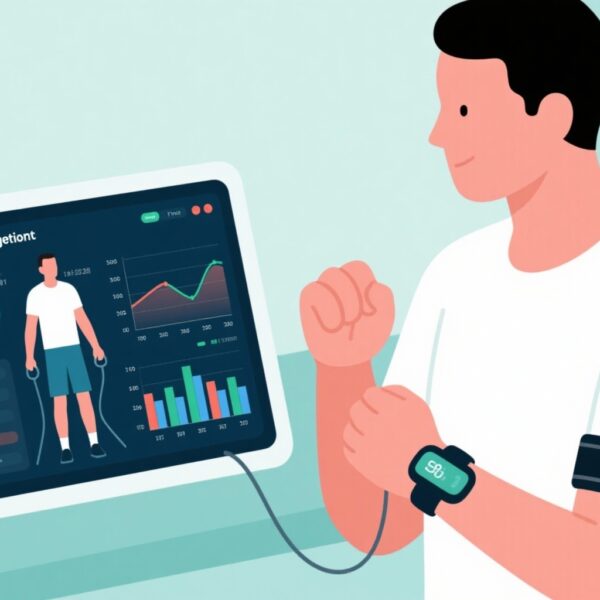Introduction
Cardiovascular disease (CVD) remains a leading cause of mortality worldwide, with coronary heart disease (CHD) being a predominant subtype. Cardiac rehabilitation (CR) is a cornerstone in secondary prevention, reducing morbidity and mortality. Traditional center-based CR (CBCR) faces barriers such as geographic limitations, transportation issues, and low patient adherence, which restrict the widespread implementation of optimal secondary prevention strategies.
In response, home-based cardiac rehabilitation (HBCR) has emerged as a promising alternative, enabling patients to undertake supervised exercise therapy remotely. However, maintaining engagement, ensuring adherence, and providing continuous supervision in HBCR are significant challenges. Recent advances in wearable technology, particularly smartwatches, have introduced new opportunities to facilitate remote monitoring, real-time feedback, and patient engagement.
This article critically reviews a recent randomized controlled trial assessing the effectiveness of a smartwatch-facilitated HBCR model in improving adherence and clinical outcomes among patients with CHD.
Study Design and Methodology
The study was a prospective, single-center, randomized, parallel-controlled, non-blinded trial conducted at a tertiary hospital in Jilin Province, China. A total of 62 adult patients with confirmed CHD were enrolled and randomized equally to either the intervention group (smartwatch-facilitated HBCR) or the control group (standard HBCR). The intervention lasted three months.
Participants in the intervention group received a comprehensive program integrated with a smartwatch. Features included real-time feedback on physical activity, remote supervision by healthcare providers, activity monitoring, and educational content delivered via a user-friendly interface. The control group engaged in conventional HBCR without technological assistance.
Primary outcomes focused on exercise adherence, assessed through the Home-Based Cardiac Rehabilitation Exercise Adherence Scale. Secondary outcomes included cardiopulmonary function (peak VO₂ measured by cardiopulmonary exercise testing), anxiety and depression symptoms (GAD-7 and PHQ-9), and health-related quality of life (SF-36), evaluated at baseline and after three months.
Major Findings and Results
The trial demonstrated compelling evidence supporting the efficacy of smartwatch-assisted HBCR. At three months, patients in the intervention group exhibited significantly higher adherence scores (p<.01) compared to controls. Improvements extended beyond adherence, with notable increases in peak VO₂ (p<.01), indicating enhanced cardiopulmonary capacity.
Psychological assessments revealed significant reductions in anxiety (GAD-7, p<.01) and depression (PHQ-9, p<.01). Furthermore, the intervention group showed gains in certain domains of the SF-36 survey related to physical functioning and vitality (p<.05). Importantly, no serious adverse events linked to the intervention occurred, and high levels of user engagement with the smartwatch platform were maintained.
These findings suggest that wearable technology not only improves adherence but also contributes to better physical and psychological outcomes for CHD patients undergoing HBCR.
Expert Commentary and Implications
The integration of wearable devices into cardiac rehabilitation programs represents a significant advancement in personalized medicine. The study underscores the potential for smartwatches to serve as accessible, reliable tools to foster patient engagement, monitor progress, and facilitate adherence remotely.
Nevertheless, some limitations should be acknowledged. The single-center design and relatively small sample size limit the generalizability of findings. Long-term adherence and outcomes beyond three months remain uncertain, and patient selection bias may influence results. Future multicenter studies with larger populations and extended follow-up are warranted.
The findings align with current guidelines advocating for the incorporation of digital health technologies into cardiovascular care, highlighting a paradigm shift towards more patient-centered, remote management strategies.
Conclusion
This randomized controlled trial provides robust evidence that smartwatch-facilitated HBCR significantly enhances exercise adherence, improves cardiopulmonary function, and alleviates psychological distress in patients with CHD. These results support the broader integration of wearable devices in routine secondary prevention, contributing to more effective and accessible cardiac rehabilitation services.
Advancing this technology-driven approach can bridge existing gaps in CR delivery, ultimately reducing CVD burden and improving patient quality of life. Larger, multicenter trials are needed to validate these promising findings and guide clinical implementation.
References
– Zhang S, Wang Y, Wu J, Ma C, Meng X. Effectiveness of Smartwatch Device on Adherence to Home-Based Cardiac Rehabilitation in Patients With Coronary Heart Disease: Randomized Controlled Trial. JMIR Mhealth Uhealth. 2025 Sep 18;13:e70848. doi: 10.2196/70848.



